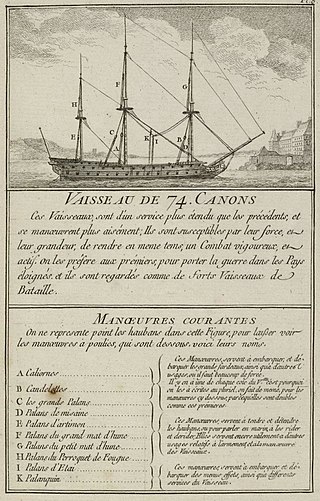
The Battle of the Saintes, also known as the Battle of Dominica, was an important naval battle in the Caribbean between the British and the French that took place 9–12 April 1782. The British victory was considered their greatest over the French during the American Revolutionary War.

The Battle of Grenada took place on 6 July 1779 during the American Revolutionary War in the West Indies between the British Royal Navy and the French Navy, just off the coast of Grenada. A British fleet led by Admiral John Byron had sailed in an attempt to relieve Grenada, which the French forces of the Comte D'Estaing had just captured.

The Battle of Fort Royal was a naval battle fought off Fort Royal, Martinique in the West Indies during the Anglo-French War on 29 April 1781, between fleets of the British Royal Navy and the French Navy. After an engagement lasting four hours, the British squadron under Admiral Samuel Hood broke off and retreated. Admiral de Grasse offered a desultory chase before seeing the French convoys safe to port.
HMS Hannibal was a 50-gun fourth rate ship of the line of the Royal Navy, built by Adams of Bucklers Hard and launched on 26 December 1779. The French ship Héros captured Hannibal off Sumatra on 21 January 1782.

HMS Formidable was a 98-gun second rate man-of-war serving the Royal Navy.
Caton was a 64-gun ship of the line of the French Navy, launched in 1777.
Sceptre was a 74-gun ship of the line of the French Navy. Built under the Ancien Régime, she took part in the naval operations in the American Revolutionary War. At the Revolution, she took part in the main actions of the French Revolutionary Wars, notably the so-called Glorious First of June and in Bruix' expedition of 1799. Showing her age by the rise of the First French Empire, she was hulked and eventually broken up.

Neptune was a 74-gun ship of the line of the French Navy.
Zélé was a 74-gun ship of the line of the French Navy. She was funded by a don des vaisseaux donation from the Régisseur général des finances.

Hector was a 74-gun ship of the line of the French Navy, lead ship of her class. Hector was launched in 1755 and fought in the American Revolutionary War during which she captured two ships of the British Royal Navy on 14 August 1778. In 1782, the ship was captured by the Royal Navy at the Battle of the Saintes in 1782. Taken into service by the Royal Navy, the vessel was renamed HMS Hector. On 5 September 1782. HMS Hector fought two French frigates. Severely damaged during the battle, and by a hurricane that followed later in September, Hector sank on 4 October 1782.
Citoyen was a 74-gun ship of the line of the French Navy, lead ship of her class to a design by Joseph-Louis Ollivier. She was funded by a don des vaisseaux donation from the Bankers and General Treasurers of the Army.

Palmier was a 74-gun ship of the line of the French Navy.
Sagittaire was a 50-gun ship of the line of the French Navy.

Antoine Cresp de Saint-Césaire was a French Navy officer. He served in the War of American Independence.
Armand Le Gardeur de Tilly was a French Navy officer. He served in the War of American Independence.

Joseph-Bernard de Chabert-Cogolin was a French Navy officer. He served in the War of American Independence.

Pierre René Marie de Vaugiraud de Rosnay was a French Navy officer and colonial administrator. He served in the American Revolutionary War, becoming a member of the Society of the Cincinnati. He was later a virulent French royalist and counter-revolutionary.
François-Aymar de Monteil was a French Navy officer. He served in the War of American Independence, earning membership in the Society of the Cincinnati. He was also a member and director of the Académie de Marine.
Actionnaire was a 64-gun ship of the line of the French Navy. Originally built for the French East India Company, she was purchased by the Navy and saw service during the War of American Independence.
Zodiaque was a 74-gun Diadème-class ship of the line of the French Navy.












